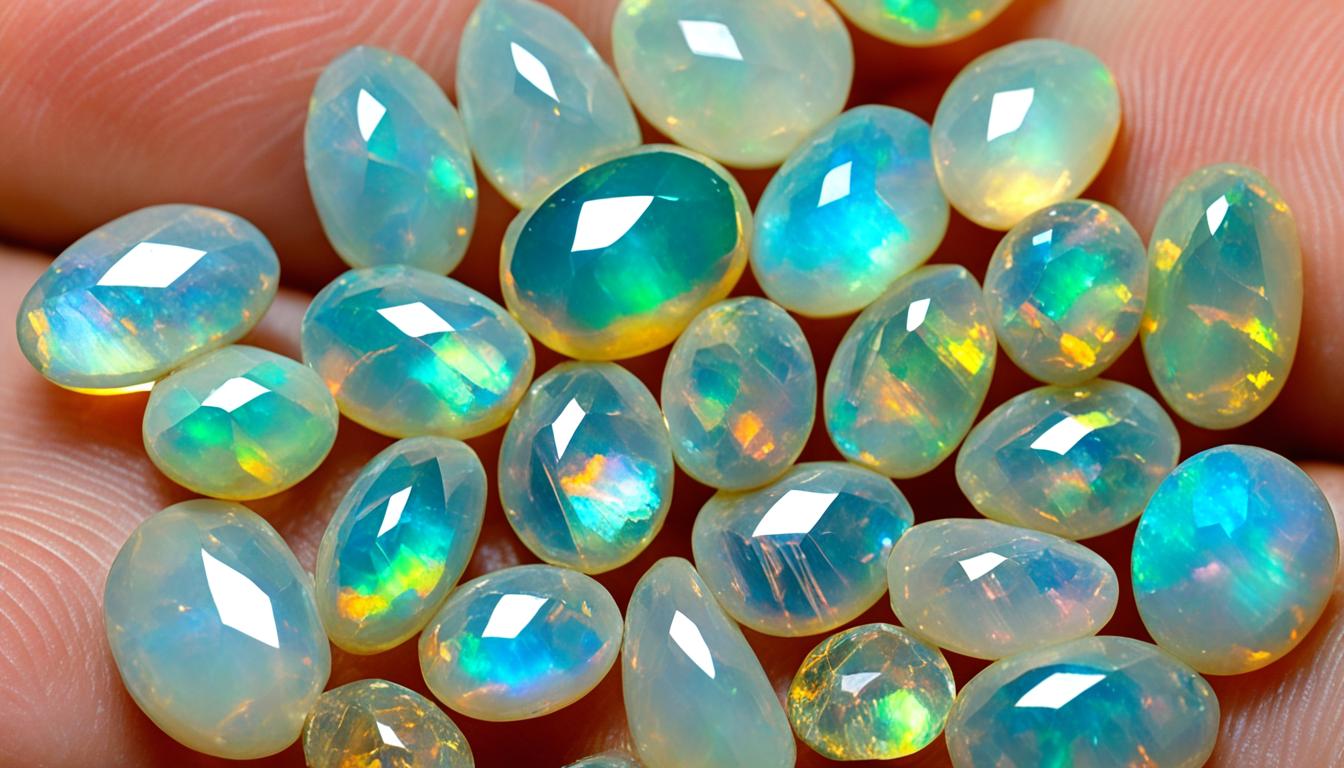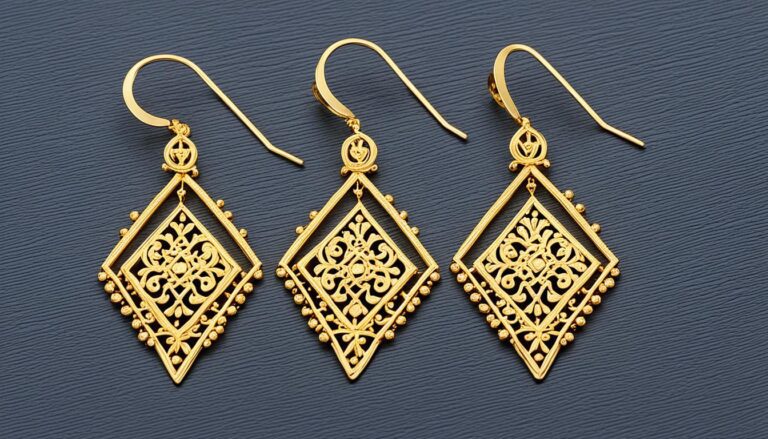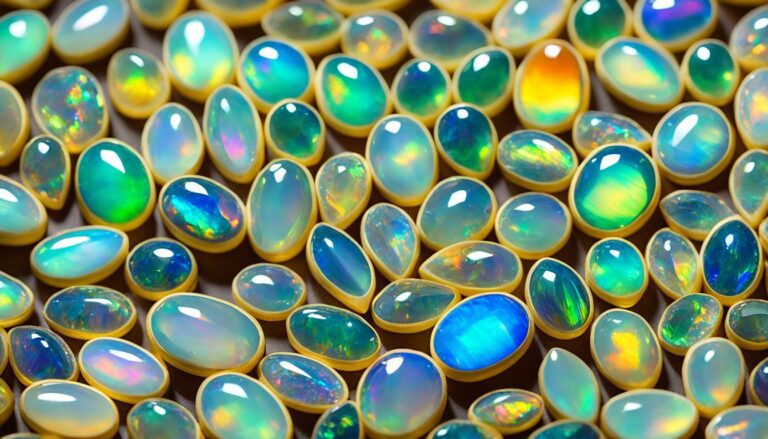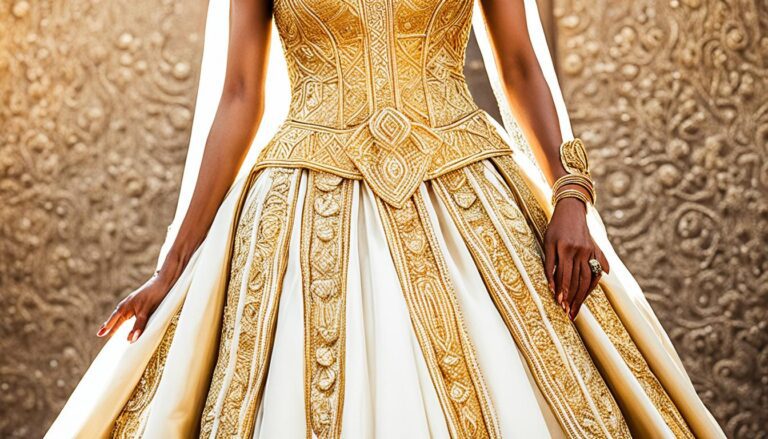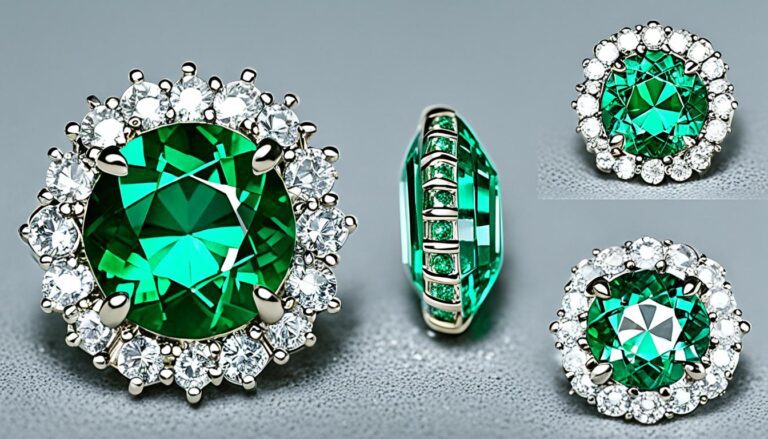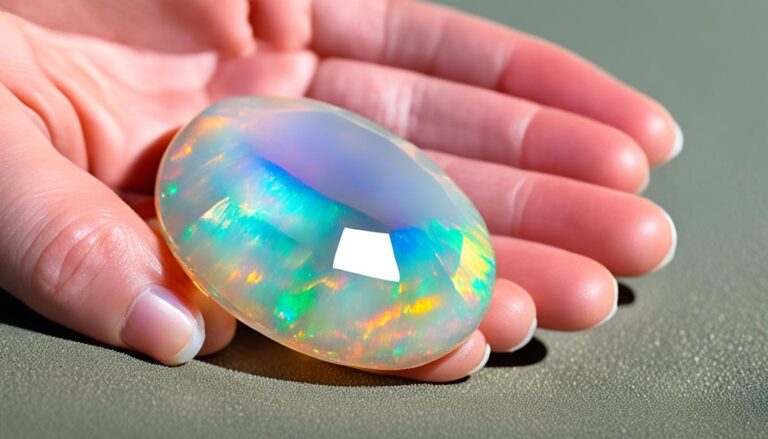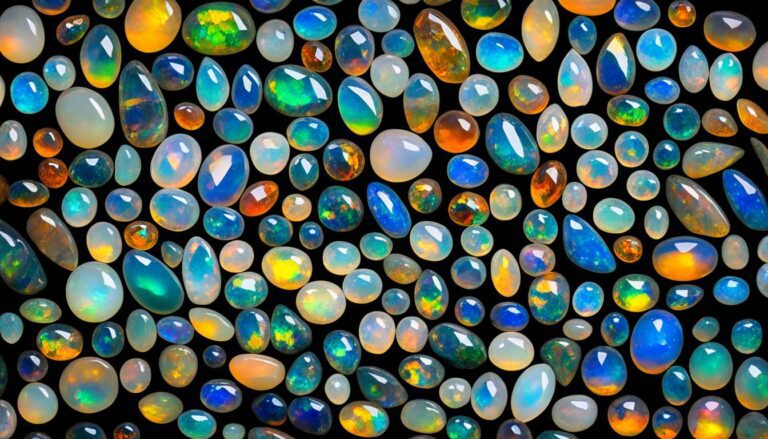Why Do Ethiopian Opals Turn Yellow
Ethiopian opals are known for their beautiful play-of-color. Yet, they can sometimes surprise by turning yellow. This color change is due to a few different reasons. Let’s dive into what causes this to happen.
Two important reasons make Ethiopian opals go yellow. Firstly, they hold a lot of water. When there’s too much water, the opal can change to yellow. This water mixes with other elements and dirt inside the opal, turning it yellow.
The second reason is external. For example, when buffing Ethiopian opals, be careful with jewelers rouge. It can make the opal yellow. Also, things in the air or water can stick to the opal. Even resin used to make opals more durable can turn them yellow with time.
It’s good to know not all Ethiopian opals will turn yellow. Whether they do depends on many different things. To keep opals beautiful and prevent them from yellowing, take care of them. Avoid too much moisture, chemicals, and direct sunlight. Clean them gently with a soft, dry cloth from time to time.
Even with yellowing risks, people love Ethiopian opals. Their bright colors and patterns are stunning. This is why many collectors and jewelry makers value them highly.
Factors Affecting Opal Color
Opals are famous for their stunning colors, ranging from electric blues to lush greens and bright reds. Ever wondered what makes these colors pop? Turns out, many different things influence the vivid array of opal hues.
Opal colors come from the way silica spheres are organized inside the gemstone. These spheres scatter light, making shimmering flashes and designs. The color you see in an opal depends on these sphere’s sizes, shapes, and arrangement.
Not only structure, but certain elements inside the opal impact its color too. For instance, copper leads to deep blues or greens. Iron, on the other hand, causes golden yellows and oranges.
Even the surroundings play a part in opal colors. Moisture, like high humidity or water contact, can change an opal’s color. Also, using jewelers rouge for polishing can add unwanted colors to the opal.
In the case of Ethiopian opals turning yellow, external factors like moisture and polishing agents seem to be the cause.
Moisture and Opal Color
Opals have a lot of water, which makes their color change when light hits them. But too much water can ruin opals. It can make them turn yellow by mixing with other stuff inside the stone. Still, not every opal will turn yellow when wet.
Tons of water on opals changes their color. They might turn completely yellow. This happens because water changes the way opals are built. This changes how light goes through them, which changes their color.
So, a wet opal turning yellow is normal. It depends on the opal and where it is. But not all opals yellow the same. Some handle water better than others.
Keep opals away from too much water to stop them from changing color. Don’t wear opal jewelry in wet places. And keep them dry when not using them. Also, check your opals often. If you see color changing, get help.
Opals are amazing gems with beautiful colors. Knowing how moisture affects them helps us keep their beauty.
Jewelers Rouge and Opal Discoloration
When jewelry is being polished, using jewelers rouge can sometimes make opals change color. This compound is great for getting scratches off metals and other materials. Yet, it might have tiny rough bits and chemicals that react with opals. This reaction can make opals look yellow. Sadly, once opals turn yellow from jewelers rouge, fixing them is hard. Cutting them again is not usually a fix.
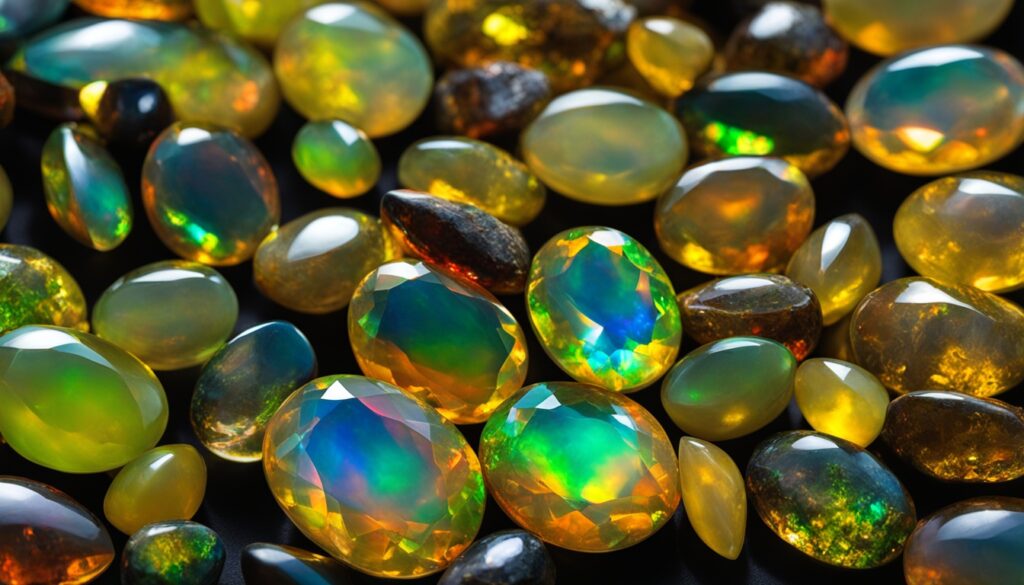
Jewelers rouge is effective for shining up metals. But using it near opals has risks. Because of this, it’s crucial to be very careful when working with opals. To protect opals from discoloration, understanding the products used in their care is important. This knowledge allows us to keep opals looking their best for a long time.
Contaminants in the Air and Opal Color
Contaminants in the air can make Ethiopian opals turn yellow. These gems can absorb pollutants from the air. This makes the opals change color to yellow.
However, the types and amounts of pollutants can change. This depends on where the opal is kept or worn. To keep opals from turning yellow, handle them with care. Keep opals in a clean place away from pollutants.
People who love Ethiopian opals should know they need special care. Protect opals from the air to keep them looking beautiful. This way, opals will keep their stunning colors for many years.
Role of Iron in Opal Color
Iron has a big part in how opals get their colors. It’s often found in water and other things. When opals meet iron-rich water, they absorb the iron. This can make the opal turn yellow all over.
Yet, not all opals go yellow with iron exposure. How much iron is around and the opal’s specific mix of chemicals matter. Some opals turn yellow easily, but others stay the same.
Knowing how iron affects opal colors is key for fans and collectors. It helps us understand what makes opals unique. With this knowledge, we can be better at taking care of and valuing opals.
Now, let’s look at how stabilizing resin affects opal color. This is another important part that changes how opals look.
Stabilizing Resin and Opal Color
Some opals, like those from Ethiopia, can be treated with a special resin. This is done to make them tougher and look better. But, this process might make the opal turn yellow as it ages.
Scientists are still trying to figure out why opals sometimes go yellow after this treatment. They think the resin might mix with the opal and change how it looks. Sadly, going yellow is usually permanent. Cutting the opal again doesn’t fix this.
But, here’s the good news. Not all Ethiopian opals get this treatment, and not all of them turn yellow. How an opal changes can depend on many things, like which opal it is and how good the resin was.
Caring for Ethiopian Opals
Ethiopian opals may turn yellow if not cared for properly. It’s important to know how to look after them. This can help them stay colorful and last longer.
Protecting opals from moisture and liquids
Moisture and liquids can make opals turn yellow. Don’t keep your opals in moist places like bathrooms. Also, take off your opal jewelry before activities that might get it wet.
Shielding opals from sunlight and extreme temperatures
Opals don’t like too much sun or heat. They can lose their color or even crack. Always keep your opals in the shade and avoid extreme temperatures.
When you store them, pick a spot that isn’t near a window. This will keep them safe from the sun’s direct rays.
Gently cleaning opals with a soft, dry cloth
Clean your opals regularly to keep them looking their best. Use a soft, dry cloth to gently wipe away any dust. Never use harsh chemicals or ultrasonic cleaners, as they can harm the opal.
Understanding individual opal characteristics
Every Ethiopian opal is one of a kind. They each have their own blend and treatment history. This affects how they may yellow over time. Knowing this can help you take better care of your opals.
With the right care, Ethiopian opals can maintain their stunning colors. Keeping them in good condition will make sure you enjoy their beauty for a long time.
Evaluating Opal Quality
When buying Ethiopian opals or opal jewelry, it’s key to look at the stone’s quality. Several factors affect an opal’s value and charm.
Color and Play-of-Color
An opal’s color shows its quality a lot. It can have shades of blue, green, or red. Play-of-color is the shine and design that moves when you turn the opal. Good opals have bright colors and a strong play-of-color.
Transparency
How much light goes through an opal matters. More transparent opals shine with vivid colors. Transparency is tested by looking at the opal in different lights.
Overall Appearance
The whole look of an opal is important. It should be clear, well-shaped, and well-polished. A top-quality opal is free from big blemishes and has a perfect cut. Also, its surface should be smooth and shiny.
Some opals might naturally have a bit of yellow. But too much yellow or uneven coloring is bad. It might mean the opal isn’t very good. Always buy opals from trustworthy sources. They’ll tell you if the opal has been treated in any way.
Getting advice from a gem expert helps a lot. They can guide you in picking top-quality opals. By keeping these points in mind and talking to experts, you can pick opals that are great for your collection or jewelry.
The Beauty of Ethiopian Opals
Despite the risk of turning yellow, Ethiopian opals are loved for their special beauty. People are drawn to the lively colors and eye-catching designs. This makes them a favorite among gem lovers and those who design jewelry.
These opals come in many colors, such as bright blues, greens, deep reds, and purples. The way the colors move and change in the stone is truly unique.
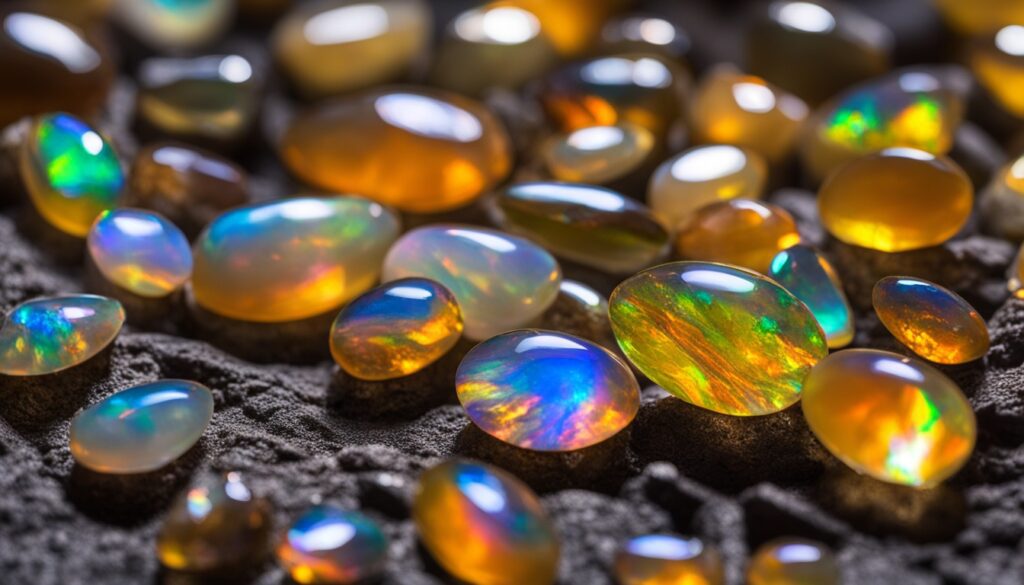
Some may worry about them yellowing over time, but the beauty never fades. Each opal is like a masterpiece, showing off a mix of colors. This creates a feeling of magic whenever you see one.
Using Ethiopian opals in jewelry adds grace and charm to the piece. Whether it’s in a pendant, a ring, or a bracelet, these opals make everything look more elegant.
Ethiopian opals are not just about their colors. They also make you feel amazed and curious. They seem to hold a bit of magic, taking you to a beautiful, mysterious place.
If you’re into collecting gems, love jewelry, or simply want something breathtaking to wear, Ethiopian opals are a top choice. They’re sure to amaze you every time you look at them.
Conclusion
Exploring the reasons behind Ethiopian opals turning yellow shows why we must care for them correctly. Not all opals will change color. But, knowing how to protect them is still important.
Things like moisture, jewelers rouge, or air and water pollution can cause yellowing. The resin used to stabilize opals can also play a part. To keep opals looking their best, store them in a dry place. And, try to avoid getting them wet or exposing them to harsh chemicals. Also, make sure to clean them with a soft, dry cloth often.
When buying Ethiopian opals, quality matters a lot. Always choose a trusted seller. This way, we can enjoy the special colors Ethiopian opals are known for, even though they might turn yellow with time.

